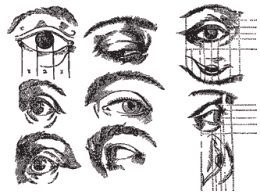

The estimated solvability of the experienced ambiguity, in contrast, was not relevant for liking and even negatively linked to interest and affect. These dimensions of aesthetic appreciation were also positively related to the subjectively reported strength of insights during elaboration of the artworks. By applying a multilevel modeling approach together with multidimensional measurement of aesthetic appreciation, we revealed that the higher the subjectively perceived degree of ambiguity within an artwork, the more participants liked it and the more interesting and affecting it was for them. Here, we empirically show that modern and contemporary ambiguous artworks evoking perceptual challenge are indeed appreciated. Although experimental research has shown people's particular appreciation for highly familiar and prototypical objects that are fluently processed, there is increasing evidence that in the arts people often prefer ambiguous materials which are processed less fluently.

We asked whether and how people appreciate ambiguous artworks and examined the possible mechanisms underlying the appeal of perceptual challenge in art. Moreover, by analyzing the dynamics of such brain networks, differential patterns might lead to a deeper understanding of beauty as a psychological construct. Thus, brain networks active during aesthetic appreciation include medial parts of frontal cortex, precuneus, and posterior cingulate cortex. Studies involving the characterization of such high hierarchy neural processes in terms of functional connectivity may shed light on the debate. The coherent engagement of different simultaneous cognitive subprocesses is certainly a source of confusion in the abundant body of knowledge related to neuroesthetics. Accordingly, neuroimaging experiments, mainly by means of fMRI, have identified several brain regions directly involved in aesthetic appreciation such as parts of medial and dorsal frontal cortex, left temporal and parietal regions, precuneus, and cingulate cortex. This complexity is a source of controversy during discussions on the mind/brain interaction regarding aesthetic experience. They involve perception, emotion, memory, language, and possibly some other cognitive functions. The neural mechanisms that mediate the aesthetic experience and judgment are complex and belong to higher hierarchically cognitive domains.


 0 kommentar(er)
0 kommentar(er)
